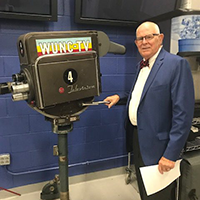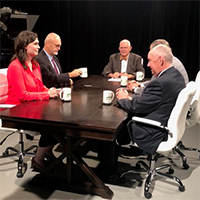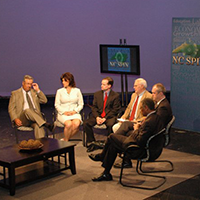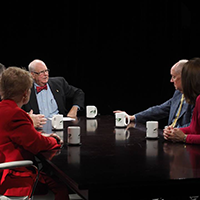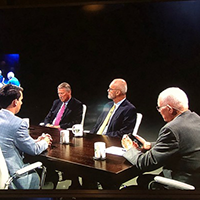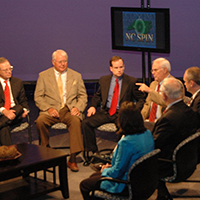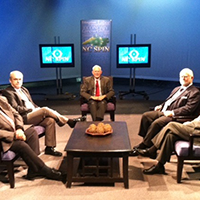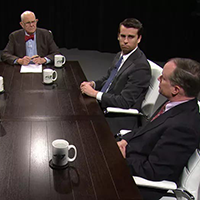As a young journalist in Washington DC, I was thrilled to join the team of a large international news feed service in the nation’s capital. I was definitely an outlier in the group — I’m from the South, am married to a US military officer, and was a parent of toddlers living in the Virginia suburbs. Nearly everyone else was single, living in DC, and from larger Northern cities, if they were from the United States. All of editors, save one, was from outside of the country, having earned a coveted career rotation to America.
Despite the array of backgrounds in the morning editorial meetings, the viewpoints were largely the same, and I was on an island. My story ideas on the economy, the growing political and economic power base in the South, and creep of federal authority coming from the White House were dismissed; not because they didn’t agree, but because they simply did not see the news value in reports on federalism or covering the United States outside of the Beltway.
I spent much of my career witnessing how most mainstream journalists see the world. There is the middle (where they think they are), and then there is the crazy right wing. For decades they did not recognize the far left, even when it was staring at them in the mirror. The Overton Window narrowed. Instead of exposing audiences to a wide array of perspectives, media coverage increasingly reinforces a smaller band of politically acceptable narratives.
EVIDENCE OF A NEW MEDIA LANDSCAPE
This week was what I believe to be a watershed moment in modern media — Paramount’s acquisition of The Free Press and appointment of Bari Weiss as editor-in-chief of CBS News. This announcement heralds a possible reversal of the long slide in public trust and the ideological homogenization of mainstream news outlets.
The slide really started with the development of wire services in the late 1800s. Reuters, the Associated Press, and United Press transformed journalism by consolidating news gathering, so local papers no longer had to chase every story alone. They drew from a shared national feed. That centralization standardized reporting and redefined what counted as legitimate journalism. The “wire” became the new reference point for truth.
What followed was more decision-making in fewer hands. For decades, moderate journalists were marginalized as the internal orthodoxy purged newsrooms of non-conforming voices. They moved on from the business, working for members of Congress, think tanks, and PR firms, until advances in communication technology brought prices down and democratized the industry. It gave a voice to a broader cross section of reporters, some conservative, some libertarian, and some others outside of the industry norm.
The shift filled ideological and geographical gaps in the landscape. Our own Carolina Journal was part of that rise, covering stories ignored by other outlets and publishing editorials that would be rejected elsewhere because it clashed with their editorial board.
This naturally was met with resistance from skeptics, but cries of “fake news” are being drowned out as new media builds audiences by uncovering critical issues and pulling the curtain back on government overreach. Plus, the emergence of AI is raising alarms on what true “fake news” looks like.
According to a new Gallup survey, merely 28% of Americans say they have a “great deal” or “fair amount” of confidence that newspapers, television, and radio report news fairly and accurately, the lowest level since Gallup began measuring trust in the media. Republican trust has sunk to 8%, while just 51% of Democrats express confidence. This is a legitimacy crisis for institutions that depend on public credibility.
Now, Weiss’ appointment represents a moment of vindication.
The audience-first, newsletter model that legacy outlets once dismissed has now been tapped to steer one of America’s biggest newsrooms. Weiss and leaders like her built a brand by challenging mainstream blind spots and treating readers as adults, not as consumers to be managed.
However, Weiss faces new challenges ahead. She will need to win over both the existing staff and her own audience through strategic hires and a transparent editorial process. She must also break the decades-old echo-chamber dynamic while navigating fresh commercial pressures and a CBS staff who may see her as an outsider. At the same time, actively recruiting diverse-minded voices will reassure her current readers that she remains true to her principles.
Network news was once the single voice that told America what mattered. Under Weiss’s leadership, it may become something else — a bridge between old institutions and the emerging media ecosystem built on free and diverse dialogue.
Carolina Journal and its readers are part of the movement that forced mainstream media’s hand to deliver a better product. This moment represents more than a single hire or an editorial reshuffling; it’s about defining who gets to tell the American story as it unfolds. Of course, there will never be just one version of that story, only layers, perspectives, and details preserved for posterity. Both Weiss and engaged news consumers play a vital role in shaping that narrative and determining whether the next era of journalism can restore credibility and trust in the fourth estate.
